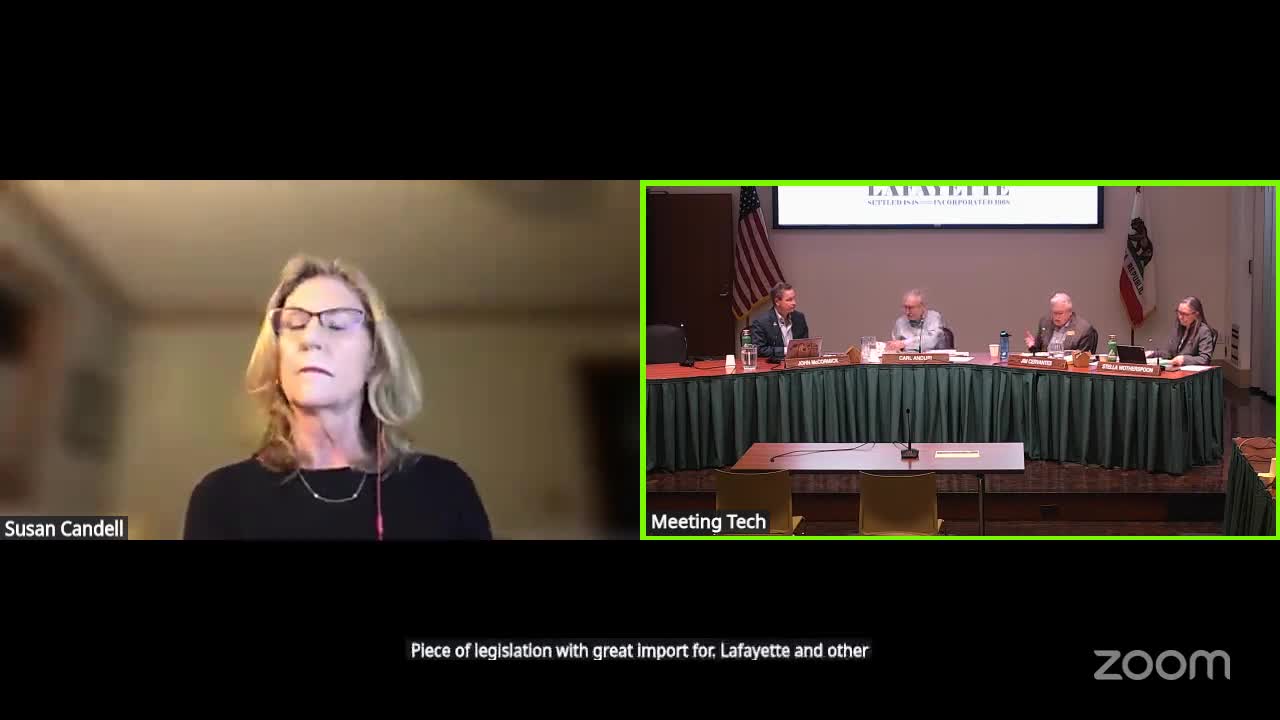Lafayette Officials Address BART Station Density Increase and Evacuation Concerns
August 12, 2025 | Lafayette, Contra Costa County, California
Thanks to Scribe from Workplace AI and Family Portal , all articles about California are free for you to enjoy throughout 2025!

This article was created by AI using a video recording of the meeting. It summarizes the key points discussed, but for full details and context, please refer to the video of the full meeting. Link to Full Meeting
City leaders, including the mayor and city manager, recounted their recent trip to Sacramento, where they engaged with legislators about the bill. They emphasized that while the potential for increased housing density is enticing, it raises critical questions about evacuation times during emergencies. The council highlighted the risks posed by high fire severity zones surrounding the BART station, particularly in light of past studies indicating that evacuation times could stretch from 30 to 175 minutes, depending on the area.
The discussion turned to the implications of adding more residents in these vulnerable zones. The mayor pointed out that during a wildfire event, the influx of people trying to evacuate could exacerbate an already precarious situation. To address these concerns, the council proposed amendments to the bill that would exempt certain high-risk areas from the increased density requirements, effectively reducing the scope of the legislation as it applies to Lafayette.
In a collaborative effort, city officials worked with their lobbyist to draft language that would protect these evacuation zones. They presented their findings and recommendations to local assembly members and senators, urging them to consider the safety of residents as they move forward with the bill. The council's proactive approach included meetings with proponents of the legislation to discuss their analysis and the potential impact on the community.
As the meeting concluded, the atmosphere was one of cautious optimism. While the prospect of increased housing density around the BART station could address the region's housing crisis, the council remained steadfast in prioritizing the safety and well-being of Lafayette's residents. The outcome of this legislative effort will not only shape the future of housing in the area but also determine how the city navigates the delicate balance between growth and safety in the face of environmental challenges.
Converted from Lafayette City Council Meeting meeting on August 12, 2025
Link to Full Meeting
Comments
View full meeting
This article is based on a recent meeting—watch the full video and explore the complete transcript for deeper insights into the discussion.
View full meeting
